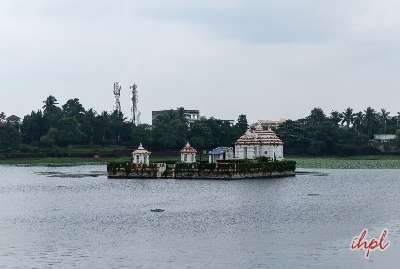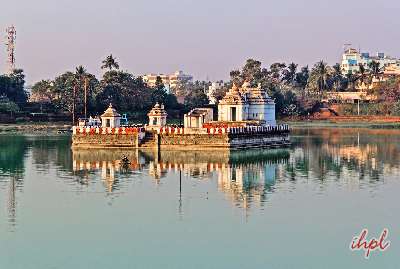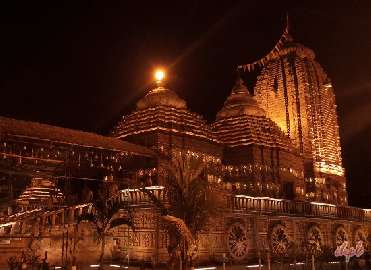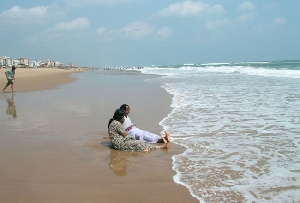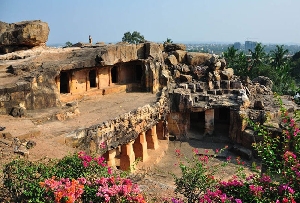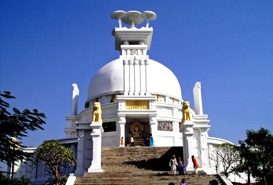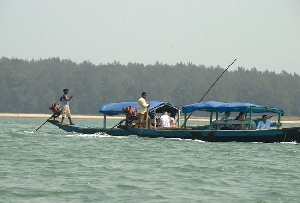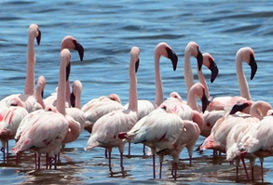Located at a distance of around 6 km from Bhubaneshwar, Udayagiri and Khandagiri Caves are one of the earliest clusters of Jain rock-cut shelter caves. Udaygiri translated to Hill of Sunrise and Khandagiri translated to Broken Hills. These caves hold a lot of significance in the fields of religion, history, art and rock-cut architecture. These caves lie on coastal plains, away from the main highway road. These caves are of the most popular tourist attractions in Orissa.
Explore Itineraries: 14 Days Orissa Textile Tour, 4 Days Odisha Tour From Mumbai, Jagannath Puri Rath Yatra
In Sanskrit inscriptions, caves and hills are known as ‘lena’. Basically, the caves of Udayagiri and Khandagiri were cells and residencies of Jain ascetics. These sandstone caves directly open to an open front space or a verandah. They probably were shelters with bare minimum necessities and were used for the purpose of prayer and meditation. The caves have mainly been excavated close to the boulder’s top.
A number of monks used to reside in each cell. Though from inside these cells were very simple but their façades were adorned with stunning sculptures. These sculptures showcased court scenes, hunting trips, events of day-to-day life, royal parades, and propitious objects worshipped by Jains. For the understanding of the common man, these caves have been numbered.
Udayagiri Caves
Udaygiri Caves are a total of 18 caves. The largest cave is the Rani Gumpha or the Queen’s Cave. It is a two-storyed monastery structure that is supported by a number of terraces and columns. Sculptures of musical instruments, dancing women and royal processions adorn the interiors of these caves. Alkapuri Gumpha is the other important caves in this group. This also is a two-storied cave that has strong columns. Carvings of treasures, ornaments, heavenly creatures and elephants are done on the columns.
Browse through our: Puri Tour Packages From Kolkata
A different kind of cave here is the Ganesa Gumpha, which are several terraces and dwellings. The best part of this cave is the sculpture of Lord Ganehsa, on the cave’s rear wall. Another sculpture shows a Jain Tirthankar busy in worship. Figures of elephants can also be seen. Vygraha Gumpha’s entry has stunning sculptures.
Name of Udayagiri Caves
| Cave number | Cave name | |||
|---|---|---|---|---|
| 1 | Rani Gumpha | |||
| 2 | Bajhara Gumpha | |||
| 3 | Chota Hathi Gumpha | |||
| 4 | Alkapuri Gumphas | |||
| 5 | Jaya- Vijay Gumpha | |||
| 6 | Panasa Gumpha | |||
| 7 | Thakurani Gumpha | |||
| 8 | Patalapuri Gumpha | |||
| 9 | Mancapuri Gumpha | |||
| 10 | Ganesa Gumpha | |||
| 11 | Jambesvara Gumpha | |||
| 12 | Vyaghra Gumpha | |||
| 13 | Sarpa Gumpha | |||
| 14 | Hathi Humpha | |||
| 15 | Dhanghara Gumpha | |||
| 16 | Haridasa Gumpha | |||
| 17 | Jagammath Gumpha | |||
| 18 | Rosai Gumpha | |||
Khandagiri Caves
As one comes down from the main road using a flight of stairs that are given in front of Cave no 17 and then go upwards of the road for around 15 min, one finds the summit leading to Khandagiri hill. The entrances of both the Tatowa Gumphas have parrot carvings, along with inscriptions of their time of original, still in original color.
Browse our packages: Odisha Tour Packages, Konark Tour Packages, Taptapani Tour Packages, Gopalpur Tour Packages, Baliguda Tour Packages
Out of the total 15 caves, Ananta Gumpha has wonderful ancient motifs related to Jainism such as serpents and Swstikas. In Navamuni Gumpha visitors can see sculptures of nine Jain Tirthankars, representing the number of Jain Digambaras at prayer. The Barabhuji Gumpha gets its name from the 2 Hindu sculptures wherein each have 12 arms.
Name of Khandagiri Caves
| Cave number | Cave name | |||
|---|---|---|---|---|
| 1 | Tatowa Gumpha 1 | |||
| 2 | Tatowa Gumpha 2 | |||
| 3 | Ananta Gumpha | |||
| 4 | Tantuli Gumpha | |||
| 5 | Khandagiri Gumpha | |||
| 6 | Dhyana Gumpha | |||
| 7 | Navamuni Gumpha | |||
| 8 | Barabhuji Gumpha | |||
| 9 | Trusula Gumpha | |||
| 10 | Ambika Gumpha | |||
| 11 | Lalatendukesari Gumpha | |||
| 12 | Cave name unknown | |||
| 13 | Cave name unknown | |||
| 14 | Ekadasi Gumpha | |||
| 15 | Cave name unknown | |||




